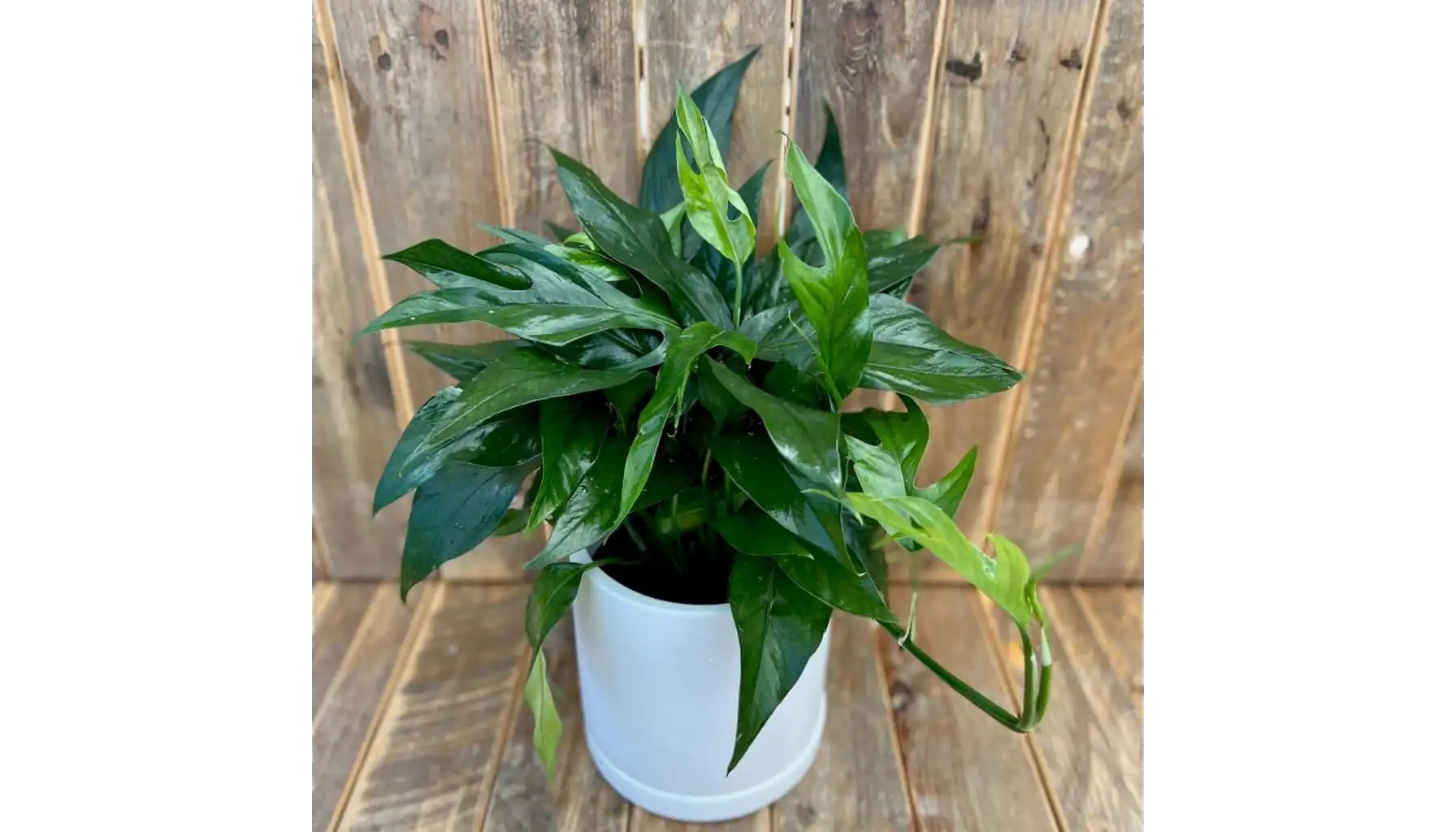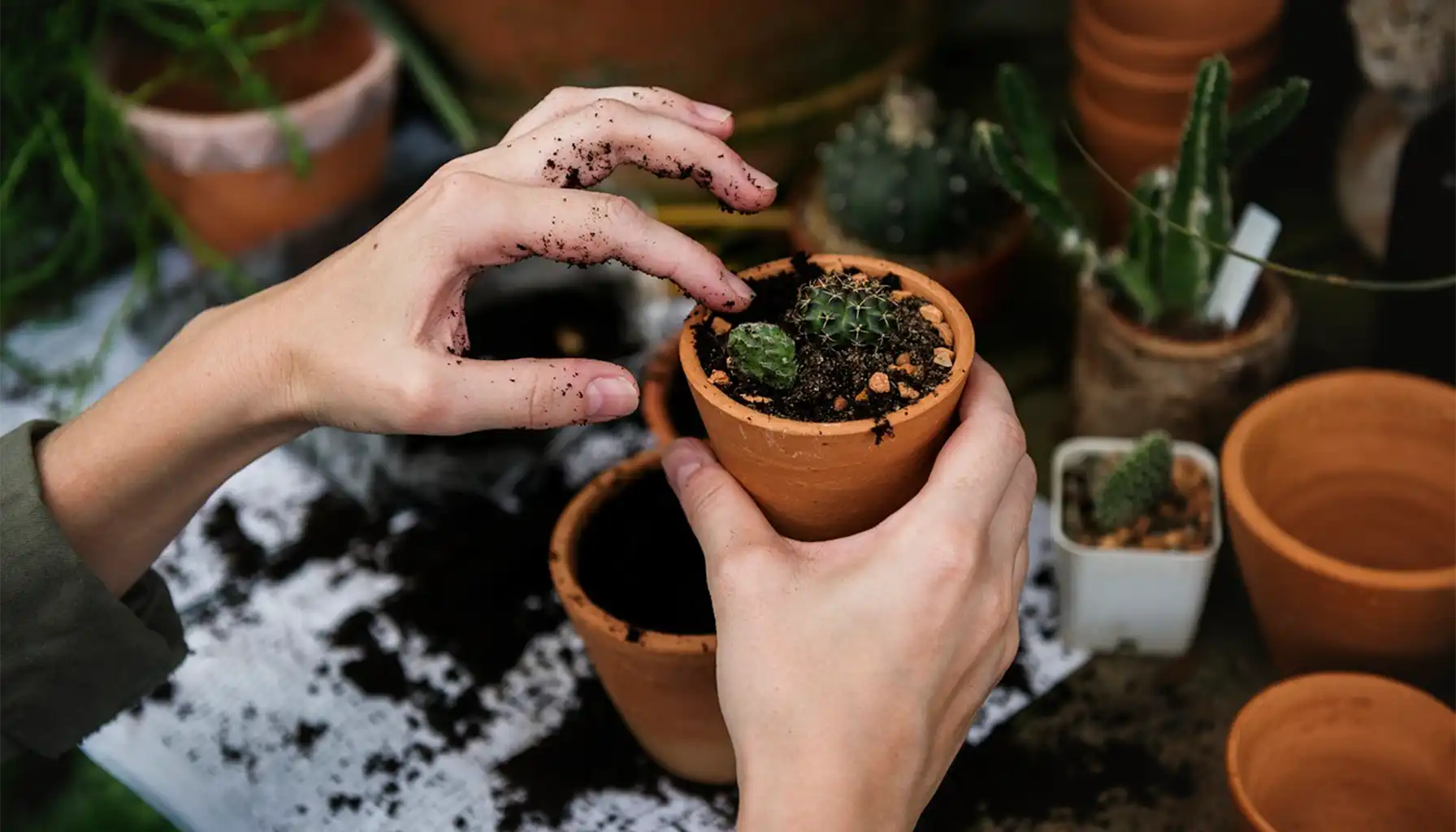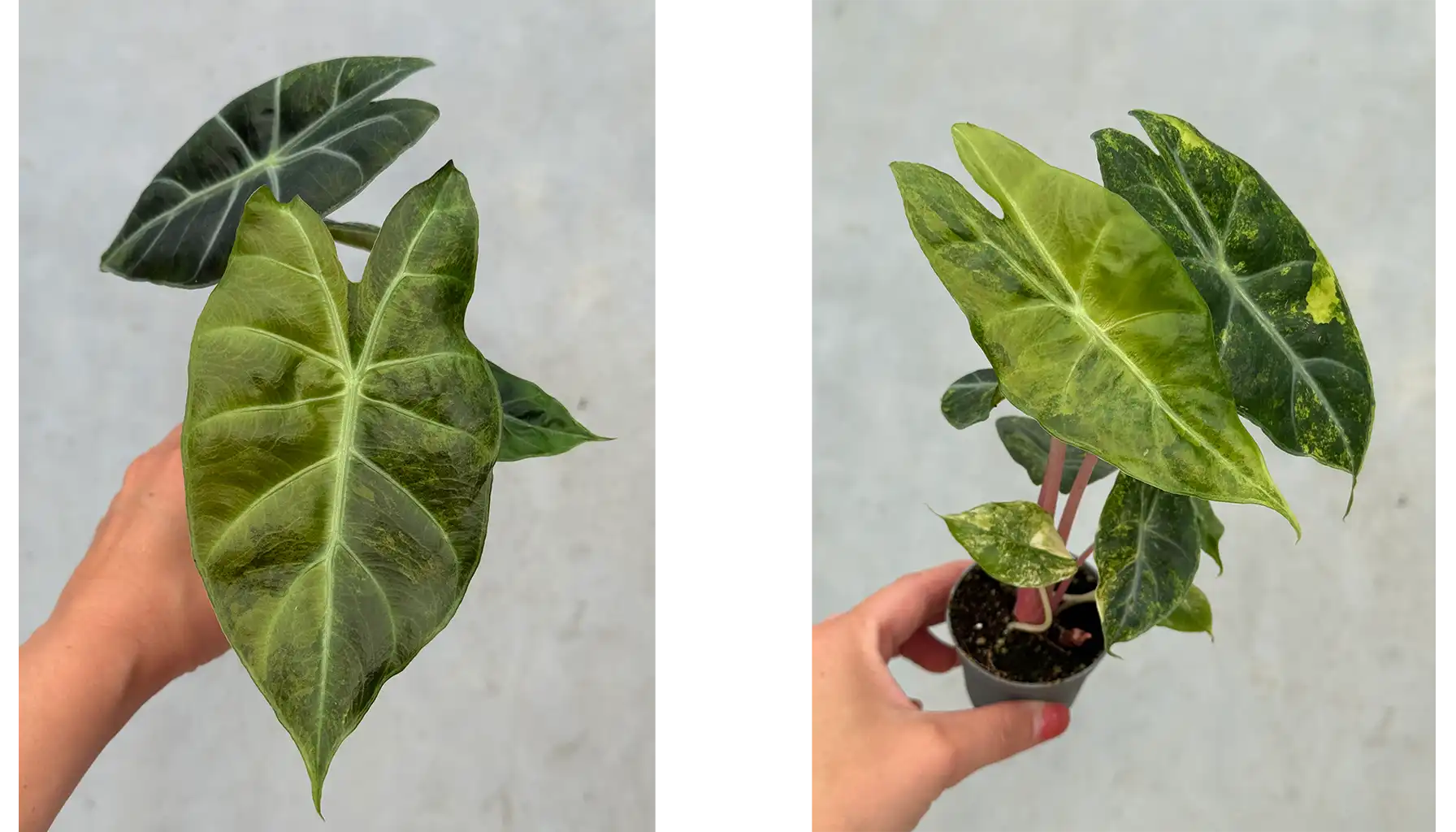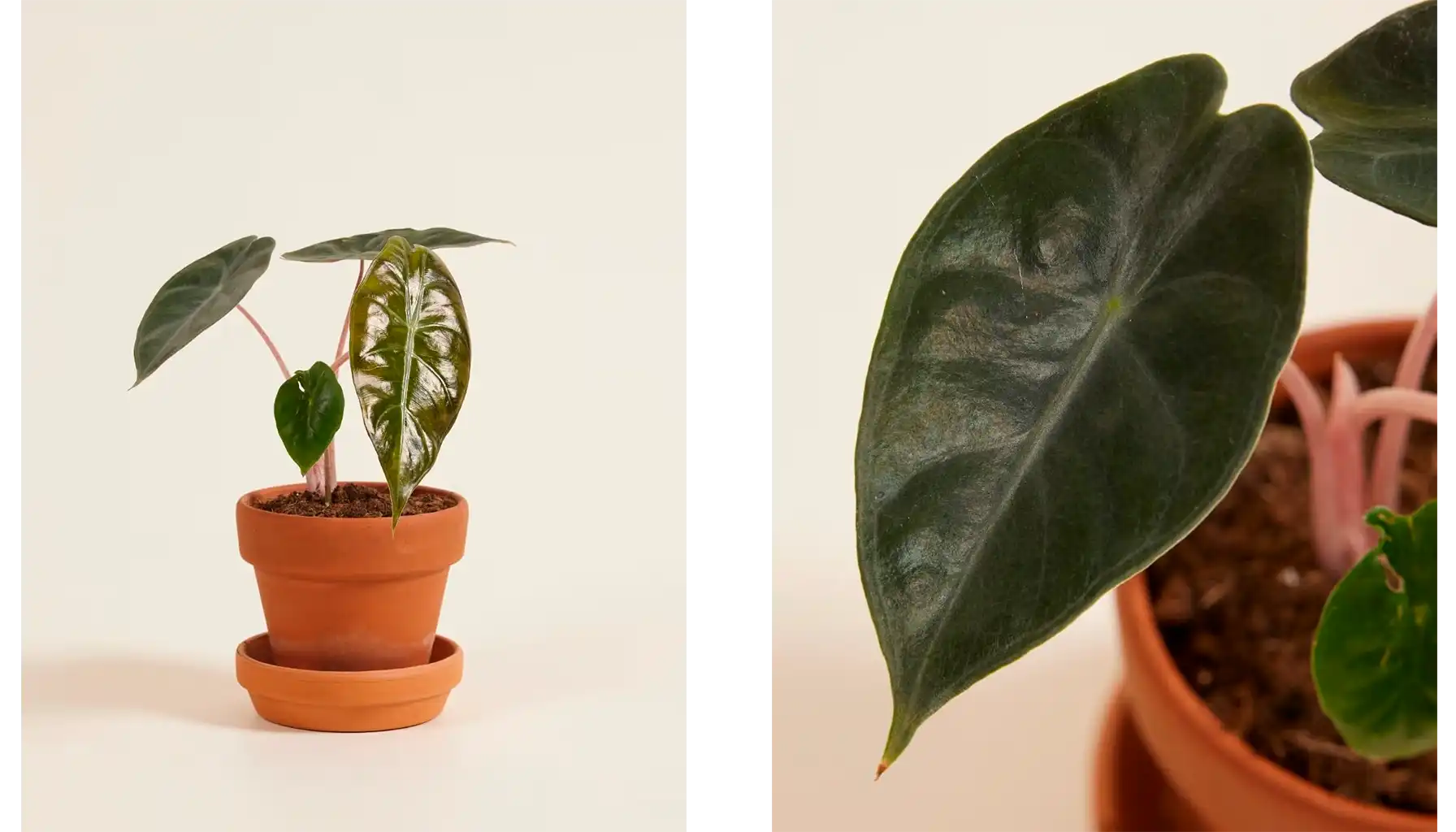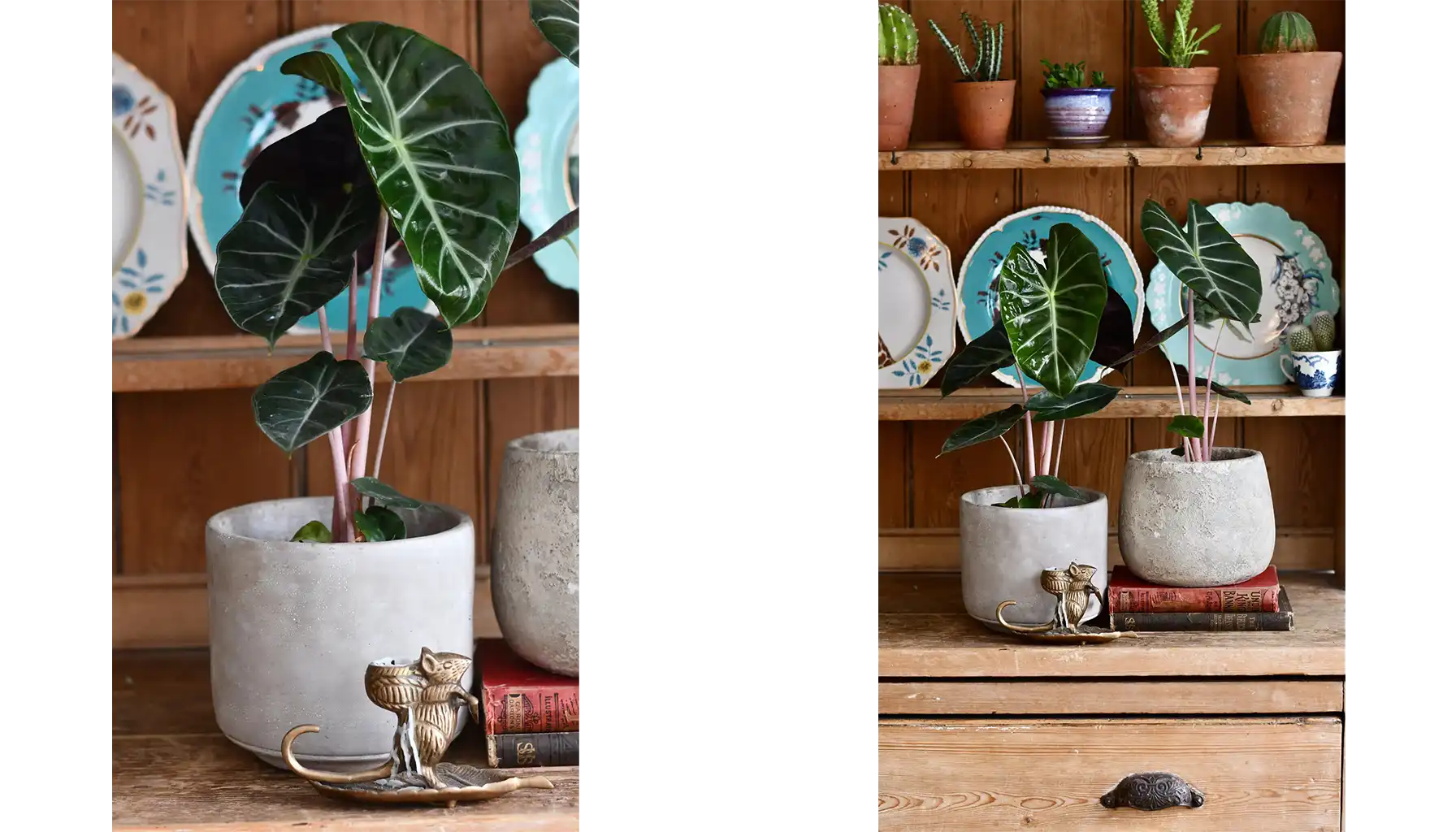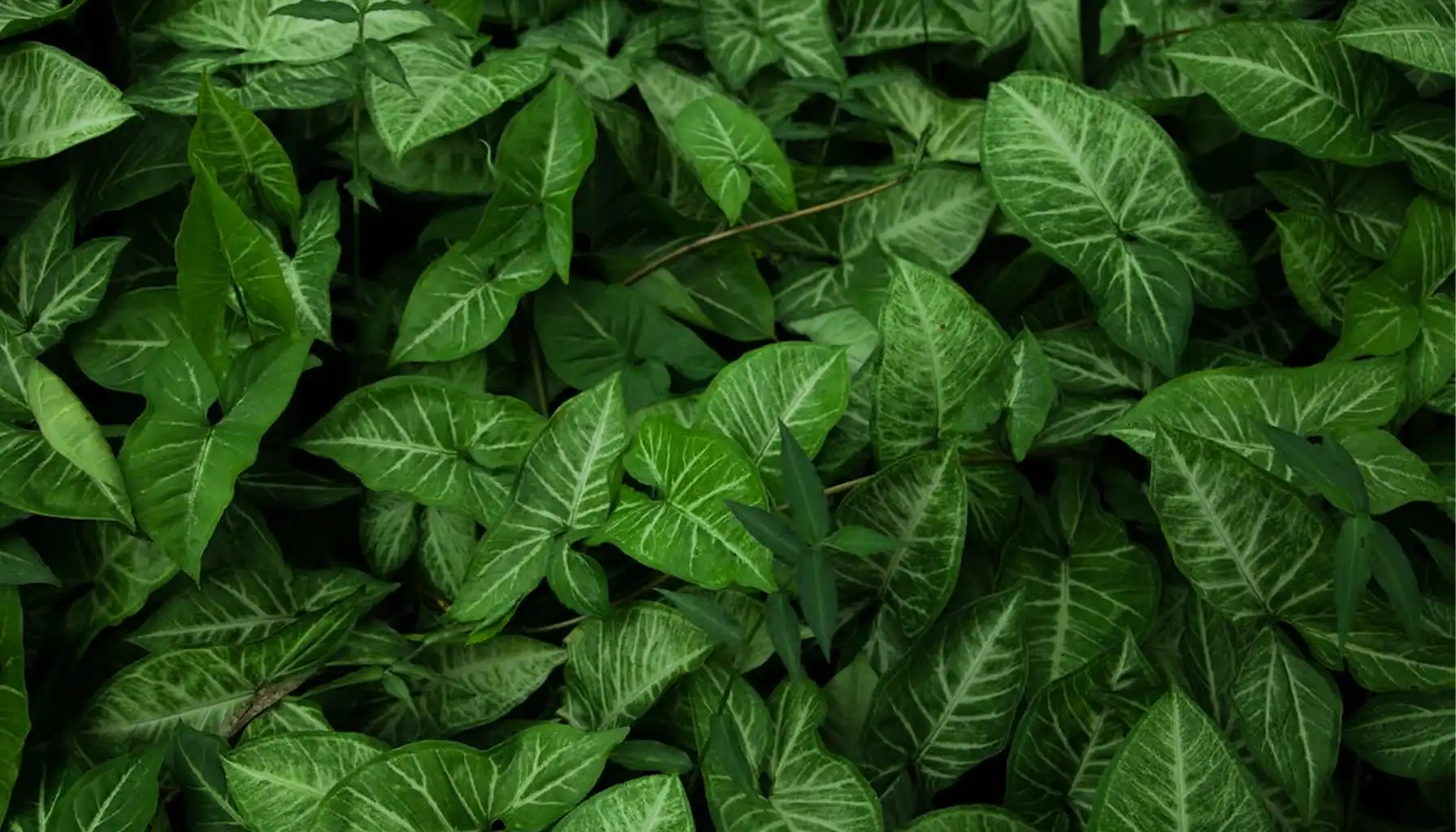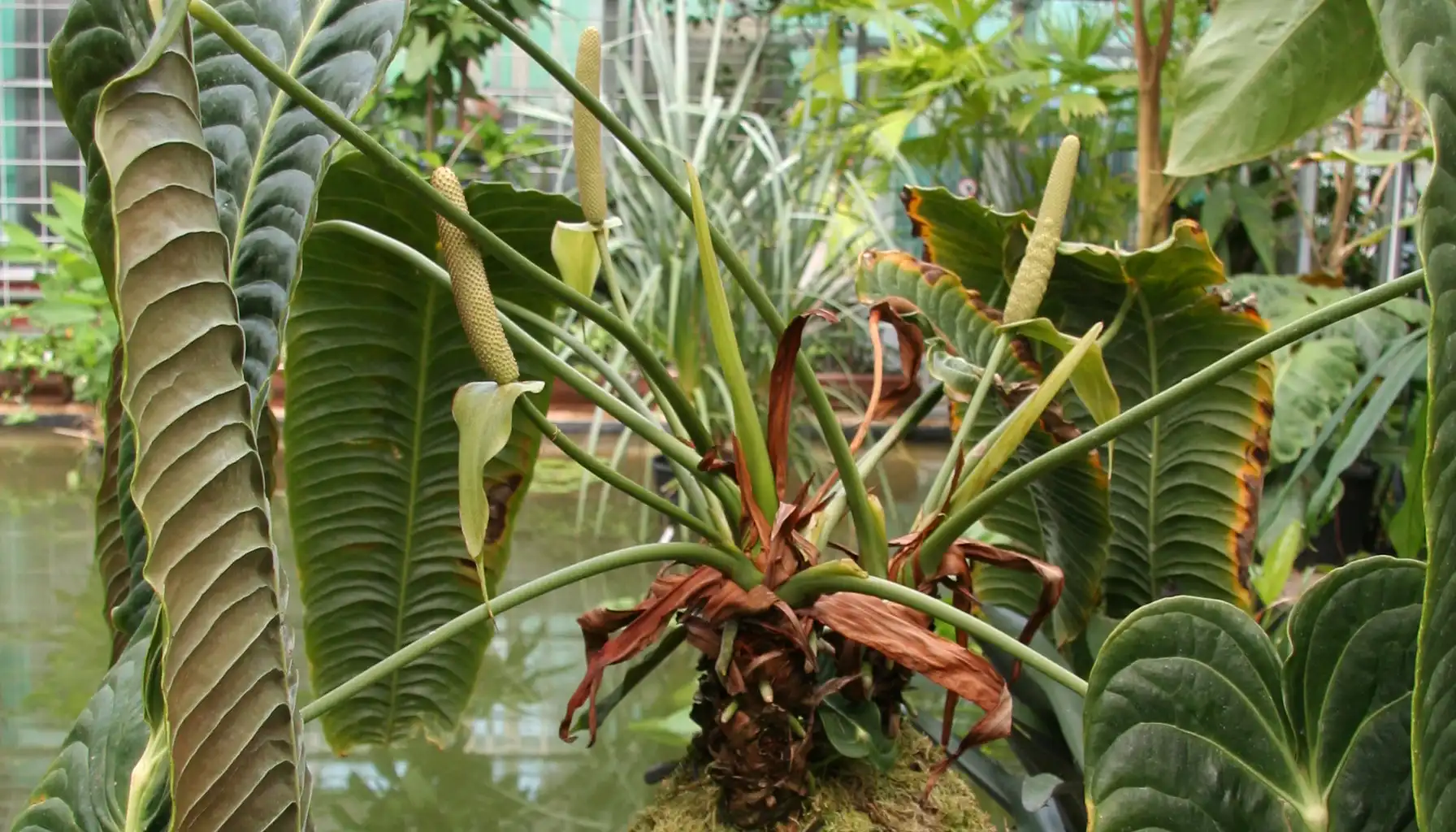If you want to add a tropical plant with bright pink stems and glossy leaves to your home, alocasia pink dragon is your perfect choice. This tropical plant with whisker tips is adored for decorating; its color is particularly striking and textured.
Using the plant identifier, you can quickly confirm that you have a pink dragon alocasia in front of you and choose the right care.
In this article, we will talk in detail about alocasia pink dragon care, analyze the features of popular varieties - alocasia pink dragon variegated and alocasia pink dragon albo - and share practical tips to help you grow this spectacular plant healthy and beautiful.
Alocasia Pink Dragon Care Basics
Lighting Requirements
Pink dragon alocasia care begins with the correct selection of lighting. This plant loves bright but soft diffused light. It’s best to place it near an eastern or northeastern window, covering it with a light tulle curtain to protect the delicate leaves from burns. It’s especially important to avoid direct rays for alocasia pink dragon variegated - light areas of the leaves are more vulnerable.
Lighting tips:
If natural light is insufficient, use full-spectrum lamps (5000–6500K) with an intensity of 2000–3000 lux.
The plant combines well with Dieffenbachia, which also prefers soft lighting.
The optimal distance from the window is 30–50 cm, so that the light is distributed evenly.
Rotate the pot every 10 days for symmetrical growth.
Avoid dark corners - there the leaves will begin to stretch and lose their rich color.
Watering and Humidity
Alocasia pink dragon large requires regular watering, but the soil should not be waterlogged. Water when the top layer (2-3 cm) dries out, about once every 5-7 days in summer. In winter, reduce the frequency to once every 10-14 days.
Use settled water to avoid mineral accumulation. For 60-70% humidity, install a humidifier or a tray with wet pebbles.
To determine the soil moisture more accurately, use a moisture meter, as relying only on tactile sensations may not always be reliable.
Make sure that the pot you choose has drainage holes and that a drainage layer of expanded clay or coarse perlite is placed on its bottom to prevent stagnation of water.
To avoid stains and fungal diseases, refrain from spraying the leaves. You can clean them with a soft, moist cloth to remove dust and encourage photosynthesis.
Pay attention to the temperature of the irrigation water: too cold can negatively affect the plant, causing stress and slowing down its development.
During periods of extreme heat, it is recommended to inspect the plants more often: intense evaporation of moisture may require additional watering.
When leaving, you can use an automatic watering system with wicks so that the soil retains moderate moisture, without drying out or becoming over-watered.
Alocasia Pink Dragon Varieties
Popular Varieties
Alocasia pink dragon variegated (or pink dragon variegated alocasia) is recognizable at first glance by its cream or soft yellow patterns on the leaves. Such variegation requires a little more light so that the pattern remains bright and contrasting. There are other “prints” in the plant world, such as leaves with natural polka dots.
Alocasia pink dragon aurea stands out with warm golden accents that add sunshine to the space, and pink dragon albo alocasia boasts almost completely white leaves. That is why this variety is considered one of the rarest and most valuable among collectors.
Alocasia baginda pink dragon and pink dragon stardust alocasia are distinguished by their compact size and expressive texture, reminiscent of the scales of an exotic fish.
Variety Name | Leaf Pattern & Color | Size & Growth Habit | Light Requirements | Rarity Level |
Alocasia Pink Dragon Variegated | Cream or yellow marbling across green leaves | Medium size, upright growth | Bright, indirect light to maintain variegation | Medium-High |
Alocasia Pink Dragon Aurea | Warm golden accents on green leaves | Medium height, strong stems | Bright, indirect light | High |
Pink Dragon Albo Alocasia | Large sections of pure white or near-white leaves | Medium, slower grower | Bright, indirect light (essential) | Very High |
Pink Dragon Stardust Alocasia | Tiny white speckles like stars on dark green leaves | Compact | Bright, indirect light | High |
Alocasia Morocco Pink Dragon | Glossy green leaves with elegant pink petioles | Medium size | Medium to bright light | Medium |
Size and Height
Alocasia pink dragon mature can grow up to 100 cm in height at home. This plant is distinguished by its leaves, which are a unique two-toned heart shape, featuring straight white and green veins, and pink supporting stems.
The leaves of an adult plant reach 30 cm in length and 20 cm in width, ending in a thin long tip. Their texture is dense and leather-like.
Pink dragon scale alocasia and alocasia dragon scale pink remain compact, rarely exceeding 80 cm. Growth is slow, with 1-3 new leaves per season, especially in alocasia variegated pink dragon.
Characteristic | Description |
Height | Up to 100 cm |
Width | 60–90 cm |
Leaf size | 20–30 cm in length |
Growth rate | Slow, 1–3 leaves per season |
Propagation and Transplantation
Propagation Methods
Pink dragon alocasia corm — the main method of propagation. In spring or summer, remove the rhizomes from the pot, find small nodules and separate them. Place the corms in a container with damp sphagnum, maintaining a temperature of 24-27°C. Alocasia pink dragon albo variegated requires special care to maintain variegation.
Use sterile scissors to separate the corms.
Ventilate the container once a week for 10 minutes.
Transplant the corms into soil after 2-3 cm of roots appear.
Transfering
Alocasia pink dragon large is replanted once every 1–2 years, when the roots fill the pot. Choose a container 3–5 cm wider with a drainage layer. Replant in spring so that the plant adapts faster. After replanting, keep in partial shade for 5–7 days.
Remove old soil without damaging the roots.
Add fresh substrate for nutrition.
Water moderately after repotting.
Component | Percentage | Function |
Coconut fiber | 40% | Retains moisture |
Perlite | 30% | Improves drainage |
Orchid bark | 20% | Provides aeration |
Charcoal | 10% | Protects against fungi |
Soil and Fertilizers
Suitable Substrate
Alocasia pink dragon mint and other varieties require loose, moisture-retentive soil with a pH of 5.5–6.0. Mix 40% coco coir, 30% perlite, 20% orchid bark, and 10% charcoal. This provides aeration and nutrition.
Flower Feeding
For pink dragon alocasia flower, use a liquid fertilizer with NPK 7-9-5 every 2 weeks in spring and summer. For alocasia pink dragon variegata, add micronutrients such as magnesium for bright leaves. Stop fertilizing in the fall when the plant is resting.
Troubleshooting
Typical Problems
Alocasia 'pink dragon' can suffer from care errors. Here's how to fix them:
Yellow leaves: Not enough light or too much water. Move closer to a window or reduce watering.
Brown spots: Low humidity. Increase it with a humidifier.
Slow growth: Lack of nutrients. Check your fertilizing regime.
Pests
Spider mites and scale insects are the main threats to pink dragon silver alocasia. Wash the leaves with a soap solution (1 teaspoon per liter of water) once a week. Prevention includes regular inspection and maintaining humidity.
Wipe the leaves with a damp cloth once a month.
Use neem oil for protection.
Isolate the new plant for 2 weeks.
There is a variant of Alocasia pink dragon scientific name and it’s Alocasia lowii ‘Morocco’ and the plant is toxic due to calcium oxalate. The presence of calcium oxalate in its parts can cause skin irritation or digestive problems if ingested. So keep it away from children and pets.
Use in Interior Design
Decorative Use
Alocasia pink dragon stardust and alocasia morocco pink dragon are excellent choices for creating a bright tropical accent in the home. Their pink stems and shiny leaves look spectacular in modern interiors, especially against neutral walls or furniture.
How to place them favorably:
Choose a ceramic pot on a stand or a tall decorative planter - this will visually lift the plant and make it the center of the composition.
Place it next to a window with bright but diffused light - this way the foliage will retain its rich color and shine.
Use neutral planters (white, gray, terracotta) so that the attention is on the leaves, not the pot.
Place the plant at eye level - this way the texture and variegation will be noticeable in the details. Pairing it with decorative bamboo.
Avoid tight corners and too close proximity to other large plants so that the leaves can fully open.
Features and Flowering
Blooming
Alocasia pink dragon flowers at home are a great rarity. However, under ideal conditions (stable temperature, humidity above 65%, sufficient amount of diffused light and proper watering) you can see greenish-white inflorescences, similar to miniature calla.
These flowers have almost no decorative value - their beauty is in the leaves, not in flowering. Many experienced gardeners carefully cut off the flower stalks so that the plant doesn’t waste energy on the formation of seeds and directs its energy to the growth of foliage.
Alocasia dragon scale pink blooms more often, especially in high humidity and stable conditions.
If blooming does occur, this is a sign that the plant is as comfortable as possible.
After cutting the flower stalk, feed the plant with fertilizers with an emphasis on nitrogen and potassium to support the growth of new leaves.
Related AI Plant Finder Posts
